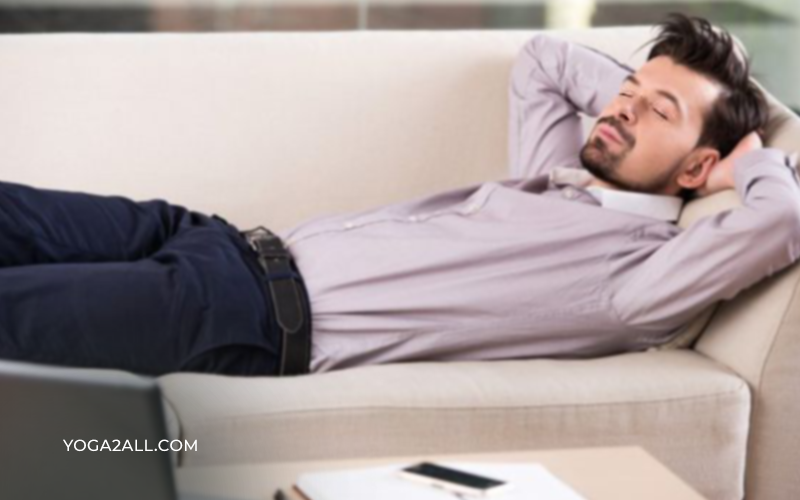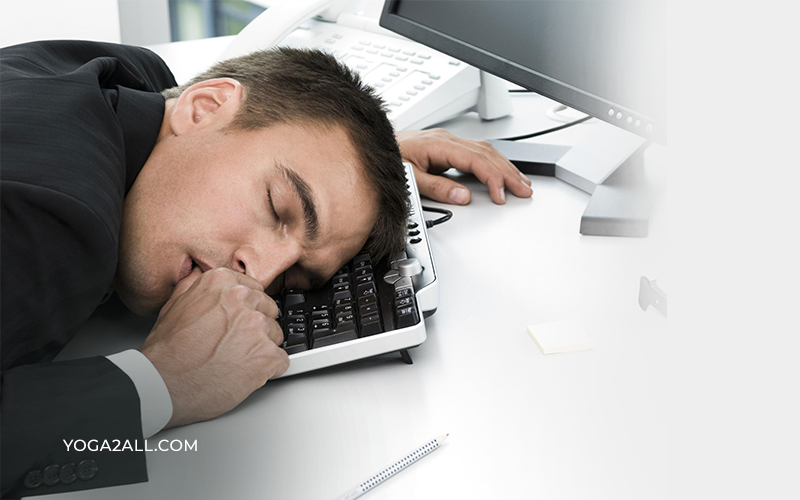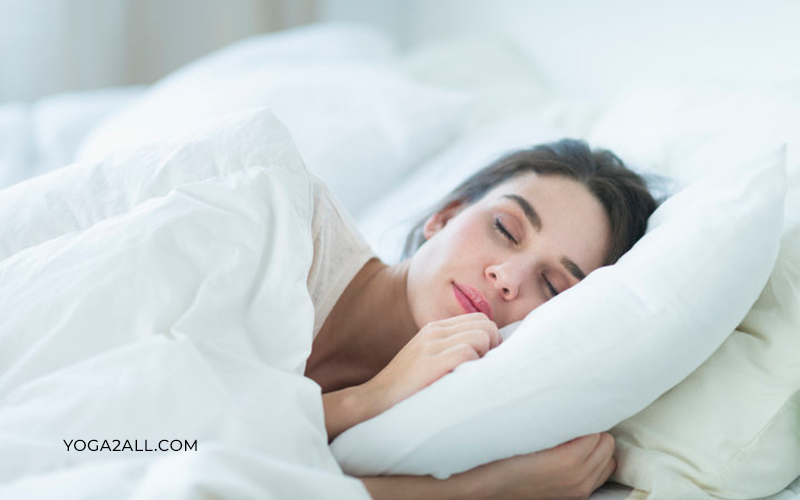Sleep is a general state in all the animal kingdom. It is a situation when our consciousness and our physical activity are comparatively closed; there is complete or incomplete senselessness, and all optional or elective muscles are not active. It is much more opposite than hibernation, but replies less to stimuli than that of consciousness. An animal sleeps when it needs rest for the body, therefore, it is called the body’s relax cycle.
Most of animals usually sleep, such as mammals, humans, birds, goats, horses, and a notable number of reptiles and fishes.
During this situation, almost all the systems in animals are in an intensified anabolic situation, featuring the development and the phenomenon of vitality and freshness of the nervous, immune, muscular and skeletal systems, etc.

About Sleep:
Sleeping is connected with a state of muscle easing and restricted perception of environmental stimuli. In animals, this is generally happening state featured by altered consciousness, relatively reserved sensory activity of nearly all elective muscles. It is acclaimed from wakefulness by a reduced ability to react to stimuli.
In sleep, most of the systems in animals are in an intensified anabolic state, focus attention on growth and rejuvenation of the immune, muscular, skeletal systems etc. This thing noticed in birds, reptiles, fish, amphibians and mammals, indicating that sleep is very natural and universal in all the animals life. (For more info see Sleep in Non-Human)
Sleep is occasionally thought to help preserve energy, although this theory is not totally sufficient as it only reduces metabolism by about 5-10%. Moreover, it is observed that mammals need sleep even in the hypometabolic state of hibernation, in which condition it is generally a loss of energy when animals comeback from hypothermia to euthermia in order to sleep. And, just like humans, animals can experience stress which can disrupt their sleep, and lead to owners looking for solutions like the best cbd pellets for horses to help them get the sleep they need to stay happy and healthy for as long as possible.
Human-being may suffer from number of sleeping disorders. Such as Insomnia, Hypersomnia, Dyssomnias, Sleep apnea, Parasomnias, Sleep-walking, REM behavior disorder, Circadian rhythm sleep disorders.

Physiology of Sleep:
The above mentioned Hypnogram shows sleep cycles from mid-night 6:30 am, with sound sleep early on. There is more REM (marked in red color) before waking.
Here, REM – Rapid Eye Movement and NREM – Non Rapid Eye Movement.
In birds and mammals, generally sleep is classified into two categories.
One is REM sleep and the other is NREM sleep. Each type of sleep has a well defined set of neurological and physiological characteristics connected with it.
REM (Rapid Eye Movement) sleep is connected with the capacity of dreaming. The American Academy of Sleep Medicine, popularly known as (AASM) classified NREM (Non Rapid Eye Movement) into three stages: N1, N2 and N3, the last of which is called the “Delta Sleep” or “Slow-Wave-Sleep”.

Stages of NREM (Non Rapid Eye Movement) sleep:
- Stage 1. This stage is in between sleep and wakefulness. In this stage the muscles are active and energetic and the eyes roll very slowly, open and close relatively.
- Stage 2. In this sleep stage the theta activity is noticed and sleepers become moderately harder to awaken.
- Stage 3. This stage is generally called SWS (Slow-wave sleep). This stage of sleep is commenced in the preoptic area and forms of delta activity, high amplitude waves at a minimum of 3.5 Hz. In this stage of sleep, sleeper is less responsive to the surroundings.
Stages of REM (Rapid Eye Movement) sleep:
In this stage the sleeper enters in REM (Rapid Eye Movement), almost maximum muscles are paralyzed. Sleep in this stage turned on by acetylcholine emission and is reserved by neurons that emission serotonin. This stage of sleep is also called paradoxical sleeping stage, because in this stage the sleeper, though revealing EEG waves, which is as similar to waking state, is difficult to response than at any other stage of sleeping.
REM sleep happens to a person when he or she returns to stage – 1 from a sound sleep. One of the most essential approaches to understand the role of sleeping and its stages is to study the deprivation of it. In this stage the EEG (electroencephalography) pattern comeback to high frequency waves and looks same to the waves constructed while the sleeper is awake.
Sleep proceeds in cycles of REM (Rapid Eye Movement) and NREM (Non Rapid Eye Movement) sleep normally four or five of them per night, the sequence usually begin N1 → N2 → N3 → N2 → REM. There is a substantial amount of sound sleep (Stage N3) prior in the night, while the part of REM sleep grows in tow cycles earlier than natural awakening.
The stages of sleeping were first narrated in 1937 by Alfred Lee Loomis and his coworkers, who segregated the different electroencephalography (EEG) characteristics of sleep into five different levels (from A to E), which constituted the spectrum wakefulness to sound sleep.
In the year of 1953, REM (Rapid Eye Movement) was brought to light as clear, and thus William Dement and Nathaniel Kleitman rearranged sleep into four NREM and REM stages. These staging standards of sleep were systematized in the year 1968 by Allan Rechtschaffen and Anthony Kales in the “R&K” sleep scoring manual.
The stages of sleep and other features of sleep are frequently evaluated by polysomonography
in a specialized sleep-laboratory. The stages of sleep and its measurements are generally taken contain EEG of brains waves, electrooculography (EOG) of human eye movements and electromyography (EMG) of skeletal muscle activity. The average length of 1st sleep cycle in human is roughly 90 minutes and around 100 to 120 minutes from the 2nd to 4th sleep cycle, which is normally the last one. Each stages of sleep have clear physiological function and can result in sleep that shows loss of consciousness but it does not attain its physiological purpose and this can result. [One may feel tired after a period of sufficient sound sleep].

The Human “biological clock”
The Sleep timing is managed by “Circadian Clock”, sleep-wake homeostasis, and especially in human-being, within definite springs, willed behavior. This circadian clock is an inner time-keeping, enzyme-managing, temperature-fluctuating device, works in and arranged one in front of another with adenosine, a neurotransmitter that hampers much bodily process connected with wakefulness. It is the circadian rhythm that regulated the proper structure and restorative sleep time. The sleep timing is executed by a person’s chronotype. A person’s sleep time will be relatively insufficient and inefficient if he or she sleeps at the wrong time in a day, every person should sleep at least 6 hours before the lowest body temperature. The time is proper if the two circadian markers happen after the middle of the sleeping period and before awakening.
Researchers at the University College of London and the University of Warwick have studied and described that lack of sleep can increase double the risk factor of death from cardiovascular disease, and long hours of sleep also can increase the risk of death, although not basically from cardiovascular disease.
Do you know, how much sleep do you need?
Microsleep
Microsleep is a short-term sleep that may last for a few seconds to the maximum of thirty seconds. This type of sleep happens where a person fails to reply to some capricious sensory input. When a person lacks consciousness and later on gains consciousness after a short duration of failure of awareness or when it shifts between the stages of consciousness and sleep.Microsleep
Micro Sleep sometimes occurs as a result of sleep distress, although, usually a person who is deprived of non-sleep can also face Micro-sleep in the time of monotonous and repetitive tasks. Many of the experts explain MS (Microsleep) in accordance with behavioral principle. [Head nods, dropping eyelids etc.] Meanwhile, others believe on EEG (Electroencephalography) markers.
This kind of sleep becomes truly high-risk when it happens in a circumstance that insistence continuous awareness, like driving a car or working with large machinery. But the persons who observe micro-sleeps generally remain unconscious of them, in lieu of thinking themselves to have been stirring the full time lost attention.
Micro sleep are generally classified by a reduce in pursuit of awareness related to the part of the brain and a rise in activity in sleep related part of the brain. Individual variability in brain formation also creates it hard to diagnose the micro-sleep events impartially.

Sleep Debt
Sleep is also called sleep deficit is an increasing result of not getting sufficient sleep. This condition may lead to physical as well as mental tiredness. Generally, there are two types of sleep debt; one is called partial sleep deprivation and the other is complete sleep deprivation. Partial sleep deprivation happens when a person or an animal sleeps very minimum time for many periods, say for one to two weeks. On the other hand, complete sleep deprivation happens when a person or animal awake for one day to weeks. Medical science specified this is a kind of sleep disorder.
Polyphasic sleep
Polyphasic sleep mentions to the exercise of sleeping multiple times in 24 hours, twice per day, thrice per day or even more. This sleep term was first discussed in the early twentieth century by a renowned psychologist J.S. Szymanski. This type of sleep is very natural in many animals and is considered to be the hereditary sleep for mammals. For instance of polyphasic sleep is discovered in patients with uneven sleep wake syndrome, which is called a circadian rhythm sleep disorder, which is generally lead to dementia.
Power nap
A power nap is a small and temporary duration of sleep which discontinues before the deep sleep happens. This type of sleep is believed to increase the benefits of sleep in contrast to time. This type of sleep is used in addition to normal sleep. A power nap can be for less than 30 minutes; even it can occur for 6-10 minutes. Naps that last more than 25 minutes come into view to be connected with a period of impaired alertness, often called sleep inertia.
Sleeping while on duty
Sleeping while on duty mention to napping, while on duty hours when the person responsible for doing some active or passive job on duty time. This conduct is considered a gross misconduct in some workplaces and may lead to disciplinary action, the action can be termination of employment or so forth. Types of work like fire fighting or live in care giving are considered as punishable. This issue is noticed and addressed in most of the work places and considered a punishable conduct. Employees who sleep in the time of duty may have lack of productivity, the unprofessional behavior and appearance, and danger that may happen when the duties are in any hazardous place. Such as pilot truck or bus drive or persons operating heavy machinery, sleeping on duty can put the place in danger.
Employees who work on day time likely to fall asleep for a short nap, while graveyard shift workers use to sleep for a long time in the shift hours, sometimes intentionally. A survey has done by National Sleep Foundation and found that all but 30% people have acknowledged sleeping in the time of duty.

Segmented sleep
Segmented sleep is also called by the different name such as divided sleep, bifurcated sleep, interrupted sleep and bimodal sleep pattern is a kind of polyphasic sleep, where two or sometimes more time of sleep is accentuated by the time of wakefulness.
This is a natural pattern of sleep in human. A case has been defined that maintaining such a pattern of sleep is very much important in regulating stress.
In accordance with Ekirch, individual sleep has two well-defined stages traversed by an intermediating time of wakefulness for at least one hour. Human also uses this period to pray and think carefully and to illuminate dream that is more realistic at hour than upon waking in the morning.
This is beyond doubt favorite time for poets and scholars to write something interesting without any interruption. In contrast, other people visit their neighbors, do sex, or engage in petty crime.
The human circadian patterns control the human sleep-wake cycle of consciousness in the day and night time.
According to Ekirch, it happens due to the modern utilizing of electric lighting, due to that most of the modern people does not practice segmented sleep.

Human brain presents with very high level of the pituitary hormone prolactin (a hormone released from the anterior pituitary gland that stimulates milk production after child birth) in the night time wakefulness, which may provide the feeling of peace that is generally many people connect with it. It is quite similar to hypnagogic (relating to the state immediately before falling asleep) and hypnopompic (relating to the state immediately preceding waking up) situation which happens just before falling asleep and in the state of being awake.
According to Ekirch, members of present-day industrialized societies, made them easier by electric lighting, generally do not practice segmented-sleep, they may misunderstand and translate incorrectly the references to it in literature: generally interpretations of the phrases “First Sleep” are “Beauty Sleep” and “Early Slumber”.
Sleep Architecture
Sleep architecture narrates the formation and pattern of sleep and encloses different factors that are liable to change and vary. Sleep ranges refer to the total time used in REM (Rapid Eye Movement) and NREM (Non-Rapid Eye Movement) sleep. The duration of sleep is the total number of time/hours spent asleep a person in 24 hours. The time duration of NREM (Non Rapid Eye Movement) to REM (Rapid Eye Movement) cycle is a vital facet of sleep architecture. The action of dividing a large process into sleep narrates how sleep is circulated from one side to the other side of our daily sleep cycle. Polyphasic sleep mentions to the exercise of sleeping multiple times in 24 hours, twice per day, thrice pr day or even more. Sleep-architecture differs expensively across species, and is believed to be seriously controlled by genetics. The evolution of various sleep architecture is controlled by a number of particular pressures, such as, size of the body, relative metabolic rate, type of food sources, the location of food sources, predation, immune function etc.
Sleep Deprivation
Sleep deprivation is a situation of not have adequate sleep; it can be acute sleep-deprivation, or called chronic sleep-deprivation. A chronic deprivation can be the starting point of fatigue, problem of weight loss and or weight gain. The deprivation affects human brain and cognitive function. Generally, complete lack of sleep over a long period of time has not been found in humans, unless the person suffers from acute insomnia.

Sleep Medicine
Sleep Medicine is an area of medical specialization or sub-specialty related to the treatment and therapy of sleep disorders. Disorders and disruption of sleep are widely spread and have a vital outcome for affected persons as well as economic and other outcome of society.
Capability of sleep medicine need a detail understanding of plethora of various disorders, such as excessive day-time sleepiness, sleep apnea, idiopathic Hypersomnia, circadian rhythm disturbances etc. One of the major and common complaint is insomnia, it can be the happened by different causes, physical, mental or others.
National Sleep Foundation
The National Sleep Foundation, established in 1990, is an independent and non-profit organization situated in USA (United States of America), main objective of this foundation is to improve public health by attaining and understanding of various sleep and sleep-disorders and to carry education associated with sleep, sleep research and advising.
Health effects from noise
Health effects from noise are some of the health outcome of raised sound levels. Raised workplace or another kind of noise can cause physical or mental impairment, hypertension, heart disease, irritation and also sleep disorders. Apart from these effects, noise health effects can be the cause of stress, stimulate aggression and anti-social behaviors. The most raise noise is vehicles and aircrafts noise, loud music and industrial noise. A reports has described, in Norway road traffic has been shown to cause of almost 80 per cent of nuisance is the source of irritation.

Polysomnographic Technologist
A polysomnographic technologist, previously called polysomnographic technician a person works overnight, daytime or home sleep studies polysomnograms on those with certain proof of sleep disorders.
White Noise Machine
A white noise machine is an electronic device that process a sound that is very random in character, this device sounds like a running waterfall or wind blowing by the way of trees. These generators are many times used by sufferers of tinnitus to disguise their indications. This gadget sometimes used to protect privacy by disguising for distance conversations, for instance, in a psychiatrist’s visiting room. The sounds produces by these devices are not always exactly random.

